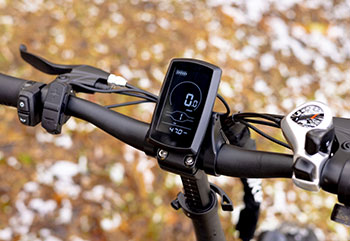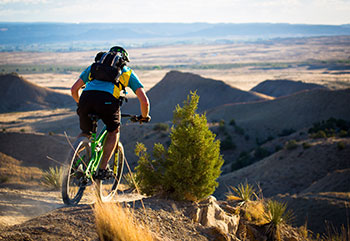Road Bicycles: A Complete Guide On Understanding Them

There are a variety of bicycles available these days, and all of them come with unique features of their own; these cycles cater to different levels of expertise, a variety of terrains, and even different riding styles. The world of cycles truly has become diverse, and we can truly say that there is a cycle for each one of us. One of the major types of bicycle happens to be the road cycle. The road cycle is one of the important categories of cycles available and remains a popular option amongst riders. In its essence, a road cycle is perfect for paved roads. Road bikes are usually speedy and have a high rate of maneuverability; this makes it efficient and easy to zip between the cars and traffics on the road. Road bikes aim at fast and superior performance whilst being lightweight yet sturdy. Road bikes are perfect for those who like to exercise with a cycle or those who prefer long-distance riding. In this blog, we understand the ins and outs of a road bicycle.

Types of road bikes:
There are various types of road bicycles, and most of them are suited for longer riding distances. Let's take a look at some of the key types of road cycles:
- Race Cycle: The name itself gives a good hint at the kind of road bike this is. A race cycle is built for competitive riding, and every component of this bicycle is created with the finishing line in mind. The frame of a road cycle is extremely light and gives a high and speedy performance. Riding a race cycle is akin to riding in the air, and the features on this cycle are at a minimum to keep the extra weight off. This cycle is not for beginners, as there is a learning curve involved.
- Sportive cycle: This type of road cycle is quite similar to a race bike. However, it is far more comfortable. The rider can have a relaxed posture and actually enjoy the ride as well. This bicycle is perfect for general usage and also comes with maximum endurance as it can take the wear of a long-distance ride.
- Time trial cycles: This bicycle is less popular but created with racing in mind once again. This bicycle compromises comfort and pushes the speed factor. This bicycle is perfect for triathlons and races where the rider is literally racing with time.
- Commuter cycles: These cycles are created with the daily commute in mind and are built keeping in mind the city. We often need to have a good balance as we zoom through the streets. The aerodynamic features of a commuter cycle are less refined than a race cycle, but it is still created with the everyday rider in mind.
- Touring bicycles: Touring bicycles are created with long-distance rides in mind. They are built after the traditional racing cycles and can take on the road for days at a time. The touring bicycle is heavier than a race cycle and comes with extra features.

Road bicycles, as compared to other cycles:
- Road bicycles versus hybrid bicycles: A road bicycle is created strictly for paved surfaces; each component and part of a road cycle is meant for the roads, while a hybrid cycle borrows elements of both an MTB and a road cycle. A hybrid cycle is suited to paved surfaces but not for long rides, while a road bike can chart longer distances easily and effortlessly. A hybrid bicycle can also be heavier as compared to a road cycle.
- Road bicycles versus mountain bicycles: The two are at the opposite end of the spectrum. Mountain bikes are thicker in every way and form; they are built to tackle the roughness of the terrain, while a road cycle is lightweight. A road bicycle also does not come with as many gears or is single-speed in most cases, while a mountain bicycle has an entire range of gears to adjust to different terrains.
Road cycle: Deconstructed
Let's now take a look at the different components of a road bike and understand its unique features. A road bike is truly one of a kind and comes with fewer yet power-packed features.
- Wheels: One of the most obvious features of a road bicycle happens to be the wheels. The wheels or tires of a road bicycle are skinny with the least amount of spokes. These tires are designed keeping in mind the aerodynamics and lower weight. The wheels of a road bicycle also have no to minimal tread; this is done to form a better grip on the road. Most wheel sizes are around 25mm. The Tracer 700C is an excellent option and comes with a slim and speedy tire.
- Handlebars: Yet another identifying feature of the road cycle has to be the handlebars. The handlebars of a road bike are often downward sloping and ask the rider to lean forwards to achieve a speedier and more efficient ride. This position helps in decreasing the wind resistance of the cycle.
- Saddle: The saddle of the road bicycle is an important feature. The saddle of a road bike is designed to keep in mind long and tedious rides. The saddle of a road bicycle can be slender and provides limited cushion; however, in the long run, this is the perfect option.

- Brakes: The logan caliper brakes are some of the most popular options on a road bicycle as it offers precise and quick speed maneuverability even at the highest speed. Unlike most mountain bikes which feature disk brakes, a road bicycle is engineered differently.
- Gears: Most road bicycles come with a single speed which offers the riders a hassle-free ride across long stretches of roads. However, some road cycles also come with 14-micro shift gear, such as the amazing Tracer R14 700C by Ninety One Cycles. This gives the rider a multi-speed experience.
A road bike is a real beast meant to take over the roads. There are many types of road bicycles available, and we must purchase one that suits our riding style as well as comfort levels.
Related Blogs

Cycling Adventures
Bikepacking: An essential guideCheck out this guide full of important tips to make your next bikepack trip fun, safe and thrilling!

Electric Bicycle
A Novice's Guide To E-Bikes: Everything You Need To Know About Electric BicyclesElectric bicycles are creating waves amongst bicycle enthusiasts, but what is it that everyone is loving about them and why should you know all about them? Read here to know more.

Mountain Bikes
A to Z about Mountain Cycles: Your guide to all things MTB!Zooming past the narrow mountainous roads is a thrilling ride. However, we must understand our MTBs first. This blog takes you through the basics of an MTB to make an informed decision.

